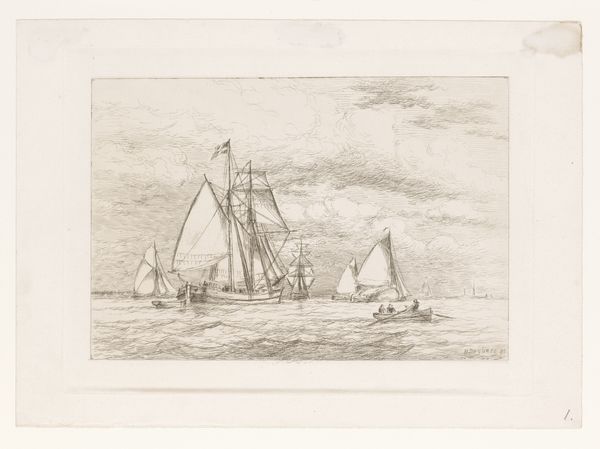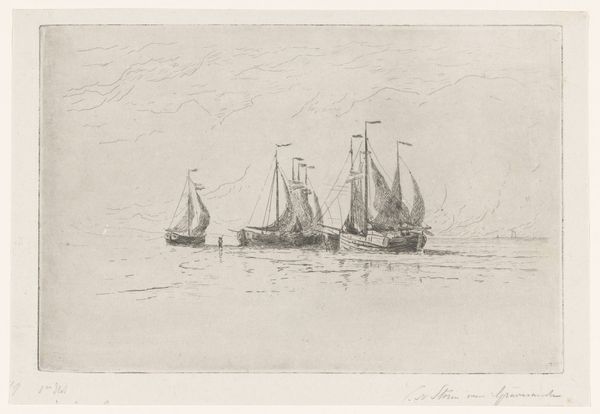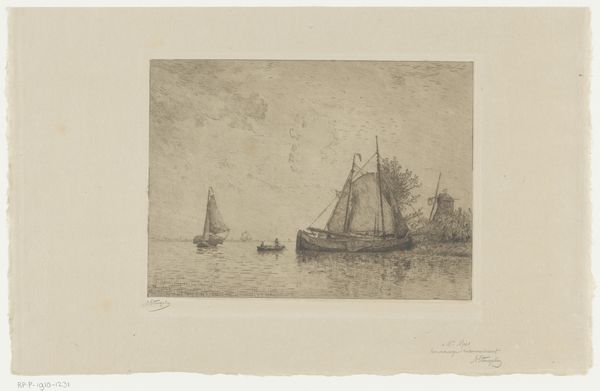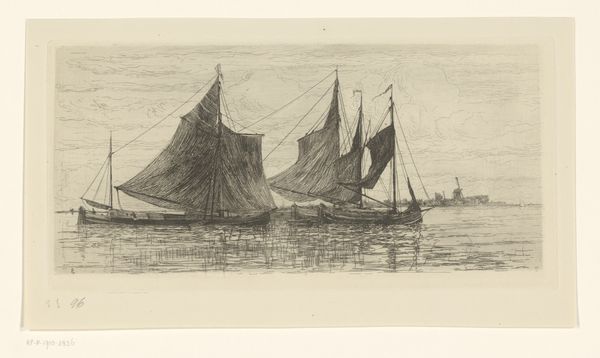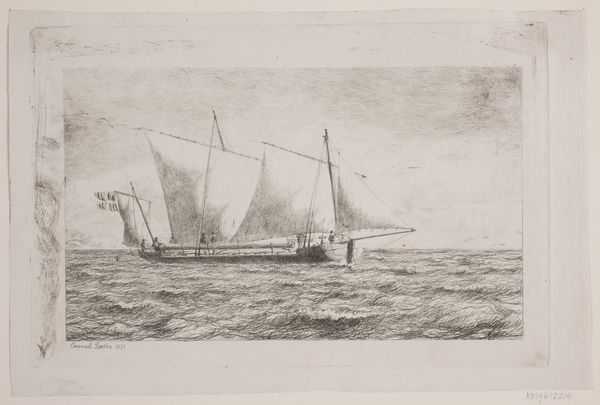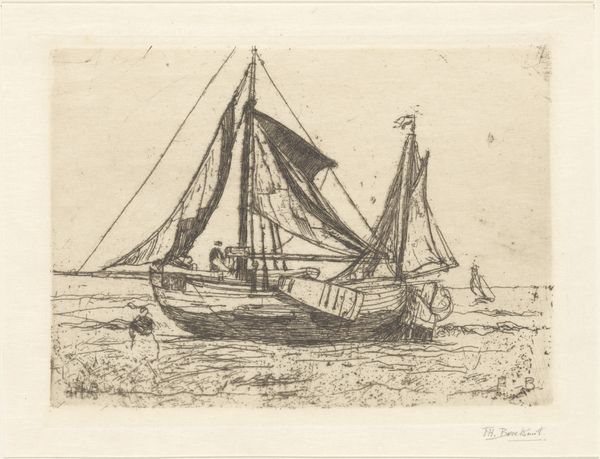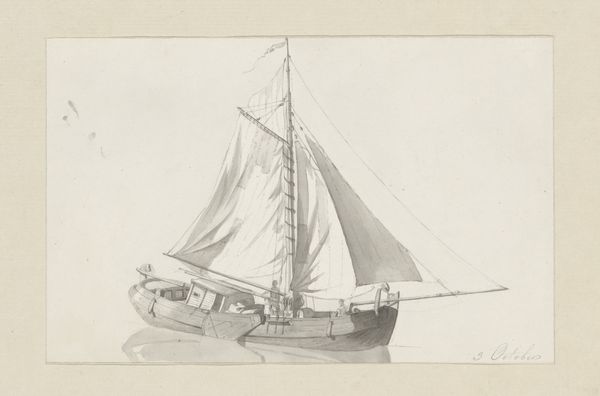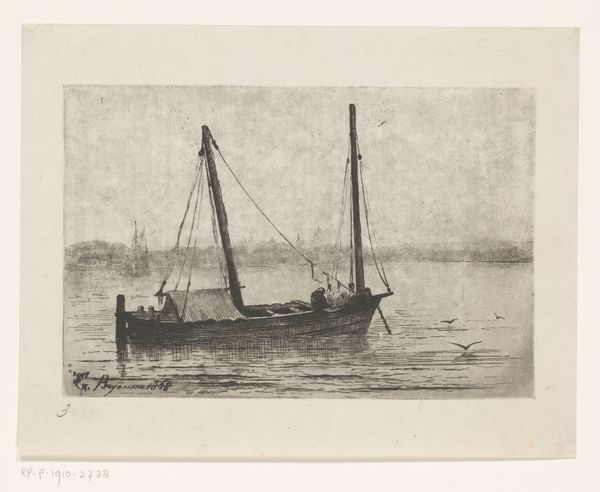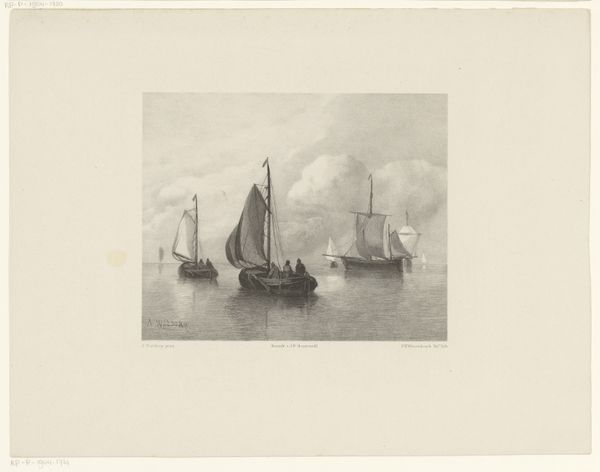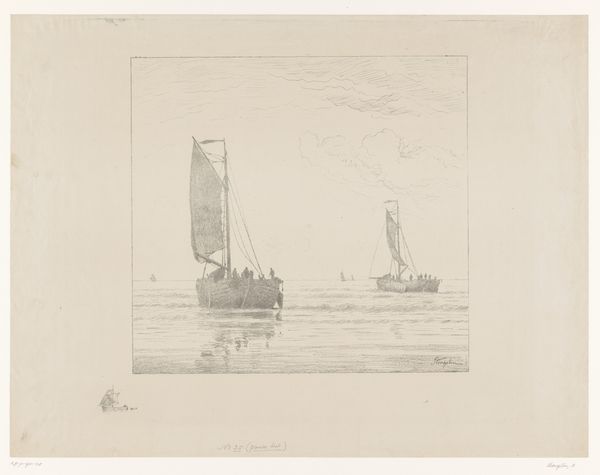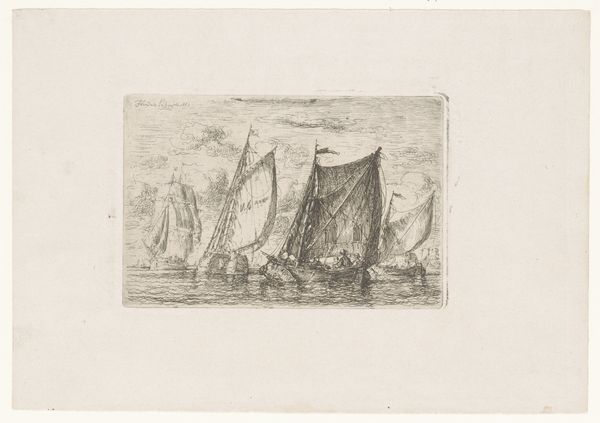
drawing, print, etching, pen
#
drawing
# print
#
etching
#
landscape
#
pen
#
genre-painting
#
realism
Dimensions: height 318 mm, width 452 mm
Copyright: Rijks Museum: Open Domain
Curator: This etching by Alphonse Stengelin, created sometime between 1876 and 1910, is entitled "Two Katwijk Sailing Ships on the Beach." It captures a slice of life from the Dutch coast. Editor: My first thought is of muted tones and heavy atmosphere. The landscape seems vast, dwarfing the figures on the boats. There's a real sense of isolation. Curator: Indeed, Stengelin masterfully used etching techniques to capture a working scene. Katwijk was known for its fishing fleet, and we see how integral these boats and labor were to coastal community life. Note the material reality of the etching itself – the tools, labor, and the printmaking processes involved. It wasn't just an artistic endeavor; it was industry. Editor: Right. And beyond industry, we have to recognize that seafaring communities like Katwijk have always negotiated power dynamics. Think about class and gender within this landscape. Who had access to the sea, and what did it mean for those whose lives were defined by it, or excluded from it? Was it accessible? Did the artist portray the life for the working class involved with the ships? Curator: Certainly. Consider, too, the socio-economic context—etchings and prints were becoming more widely accessible at this time, democratizing art ownership to a degree. A work like this allows people outside the elite to connect with scenes from everyday labor and the natural world. There’s a real power in its accessibility, as you’re saying. Editor: I'm especially drawn to how the people onboard appear as silhouettes almost, faceless within the larger scope of labour on display here. It forces a questioning of who benefits from such labor. How were such depictions consumed then, and how might it change with our perspective today? Curator: The interplay of light and shadow adds to that effect, absolutely. Stengelin isn't just depicting boats; he's illustrating a whole system of labor and coastal life made available to a burgeoning public, one affordable etching at a time. Editor: Considering the realities these communities faced, the fishing trade involved risks, fluctuating markets, political pressure on those fishing regions, Stengelin created an understated picture that, nonetheless, holds great power. Curator: Indeed, reflecting on how materials meet art to depict community life is vital. It allows us a better view on how things were made, both then, and potentially in similar means today.
Comments
No comments
Be the first to comment and join the conversation on the ultimate creative platform.
